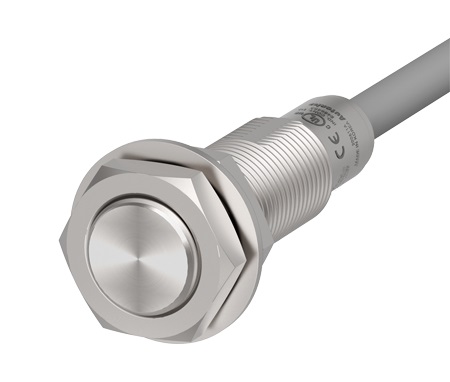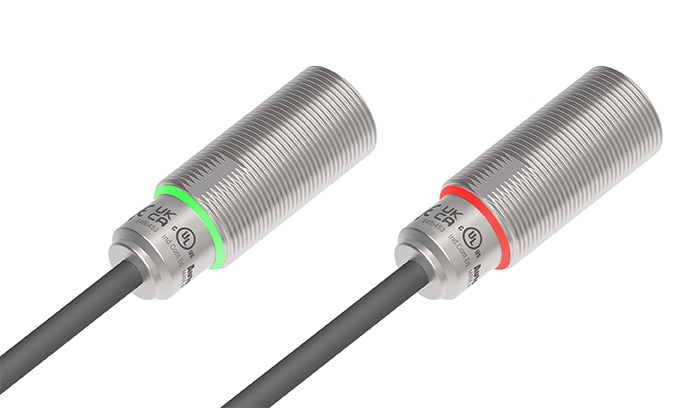Full-Metal Jacket: Long-Range Inductive Sensors From Autonics
Autonics’ PRFD sensors bring high-visibility indicators, rugged housings, and long-distance sensing to the automotive, chemical, metalworking, and food and beverage industries.
Many industrial automation systems rely on the output from proximity sensors to determine when to begin cutting or welding, when to move items on a packaging or sorting line, or to ensure people and unauthorized objects are not located near the system. Autonics’s newest sensors, the PRFD induction proximity series, are now available to meet some of these needs. The PRFD sensors can detect whether a workpiece is properly positioned before the next operation begins, preventing damage to costly equipment or injuries to personnel.
The Autonics PRFD sensors are induction-based, meaning they can detect the placement of metallic objects. This feature makes them particularly valuable for locating and verifying the placement of metal bins during picking and packing operations or sheet metal during stamping, cutting, and welding operations.

The Autonics PRFD series sensor. Image used courtesy of Autonics
PRFD Series Sensors
The PRFD series sensors feature 303 stainless steel housings, making them tough and rugged for the industrial environment. The stainless steel resists corrosion, making it suitable for the food and beverage industry. The housing is rated to IP67, protecting the sensor from dust and moisture ingress. It is secured in place with a set of hex nuts that tighten on the threaded shaft of the sensor housing, providing a tight, vibration-proof fit.
Due to their all-metal construction and induction-based sensing, the PRFD sensors are not hampered by high-magnetic field noise from welding current. Furthermore, the PRFDAx models are protected from molten metal splatter caused by cutting or welding operations. The sensors’ specifications also prevent them from malfunctioning when metal fragments are present, making them ideal for machining operations. The sensors can safely ensure the correct tooling is in place, such as verifying a drill bit or end mill is not broken or damaged.
The PRFD series sensors can also measure objects up to 12 mm away, which is considered quite a long range for this type of sensor. The thick sensor head, oil-resistant cable bundle, and ability to function even with wear make the sensors useful in metalworking or high-wear applications.
One of the most innovative features is the status display. Rather than having a single LED that is hard to read from some positions, the PRFD series sensors have a ring of LEDs that can be read from 360 degrees around the sensor. This sensor can be programmed to report when objects are in the proper location, drastically speeding up troubleshooting steps across complicated automation systems.

A ring or 4-sided LED indicates status from 360 degrees around the sensor. Image used courtesy of Autonics
Targeted Applications
Autonics intended these sensors to be used primarily in the food and beverage, chemical, and metalworking markets. The stainless steel housing’s resistance to chemical and physical damage from harsh environments is a key advantage for the PRFD series.
303 stainless steel also resists the growth of bacteria, making it a solid choice for food, beverage, and even pharmaceutical markets, where sensors could otherwise harbor organic particles. To limit these sources of contamination, production lines are either “cleaned in place” or “steamed in place” to kill any bacteria growth. Sensors without the proper specifications could be damaged by this process, but Autonics designed their PRFD sensors to withstand these cleaning routines.
These sensors will work in a variety of harsh environments, providing real-time data for automated systems. Any industry that relies on detecting the presence of moving components, especially metal parts, will benefit from the PRFD series sensors.

 Facebook
Facebook Google
Google GitHub
GitHub Linkedin
Linkedin








